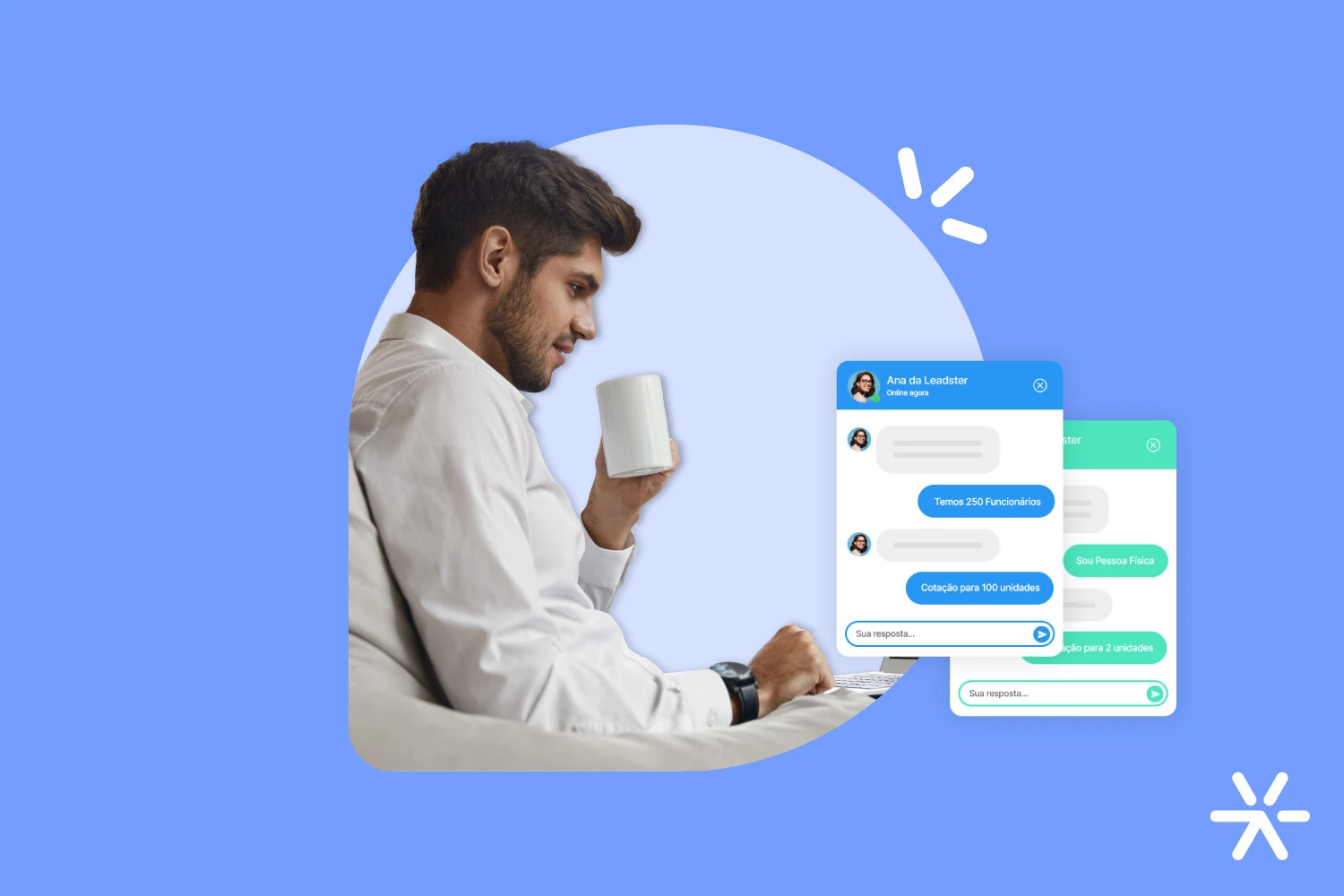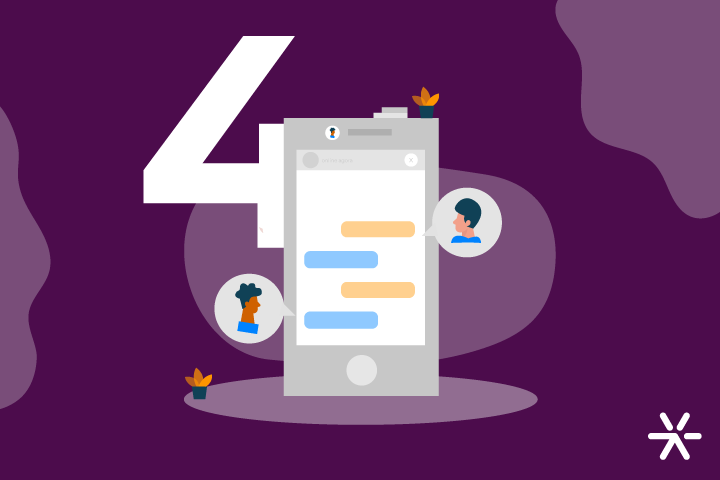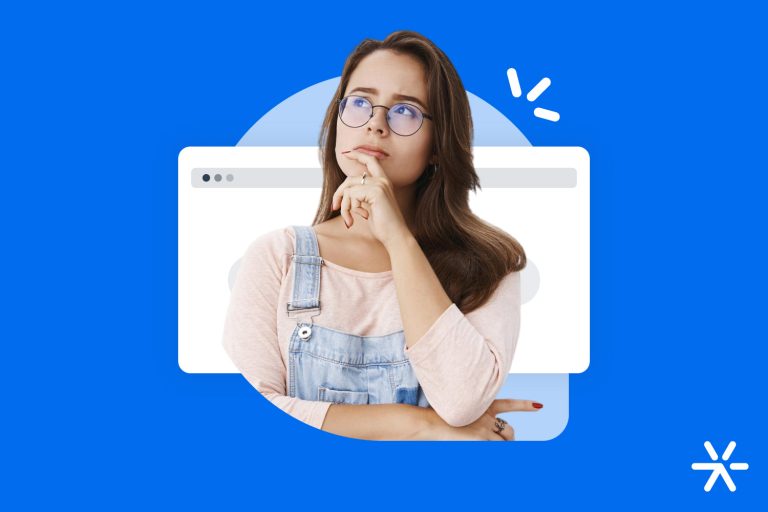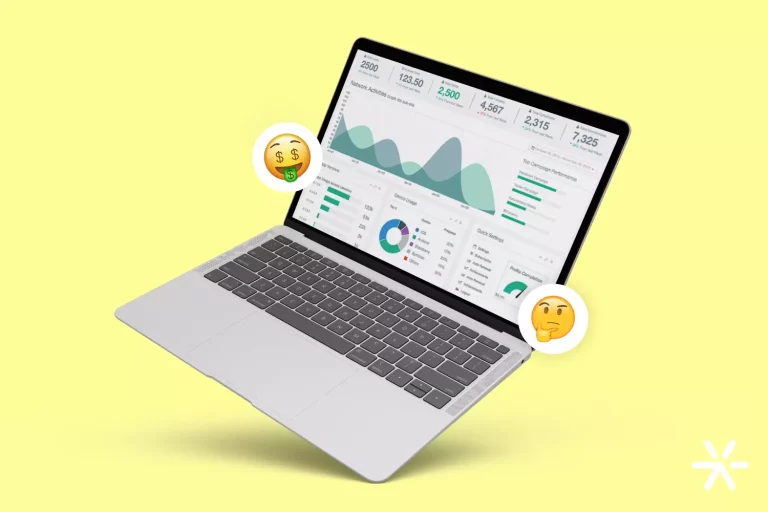10 Types of Chatbot and How To Choose the Best
Convenience and personalization: these are the deliveries and advantages offered to the consumer when a company includes chatbots in customer service channels and marketing and sales strategy.
The tool is at the center of attention for brands looking to stand out in generating qualified leads and also automating processes. However, the type of chatbot chosen makes all the difference in the results – and often this strategic point is not well thought out before implementing the tool.
If your company wants to start using chatbots or improve the already applied strategy using this precise tool, check out the complete content we share here and understand which type of chatbot is right for your brand!
What are chatbots?

The word “chatbot” in English comes from the combination of two other terms: “chatter” (referring to someone who chats) and “bot” (short for robot).
So, a chatbot names a type of artificial intelligence system that generates automated conversations and interactions between the system and consumers, using predefined texts.
The tool simulates human interaction within a context familiar to the consumer: that of instant messages.
Chatbots initially emerged focusing on mobile, primarily for apps and social media, but today they are widely applied on websites, Landing Pages, and e-commerce platforms. They can be used to answer queries, assist in commercial processes, provide personalized content, and even process payments.
➡️ Check this out: Chatbot Messages Examples and How to Create Yours
The Global Chatbot Market
Currently, the largest chatbot market is located in Latin America; however, the Asia-Pacific region is where the sector is growing the fastest worldwide.
Among the market segments that most use chatbots are retail, banking, financial services and insurance (BFSI), and healthcare.
Market forecasts are also promising, with one indicating that chatbots will save $11 billion in the retail, finance, and healthcare sectors by 2024, and that 50% of them will be accessed through discrete apps in the coming years.
➡️ You'll like this: How to Use Chatbots to Improve your Sales Automation
There’s also a silent revolution — or not so silent after all — happening in the global chatbot market: Artificial Intelligence is changing the game very rapidly.
Just within the chatbot scenario, there are already several tools using integrated ChatGPT to automate customer experience. And this market is projected to reach $13.9 billion by 2025.
But this is just one facet of customer experience chatbots. The Artificial Intelligence market is exploring new avenues to consolidate itself and is pioneering a multi-channel strategy.
There are already solutions seeking to implement Artificial Intelligence in various types of contact, such as email, phone calls, and of course, chatbots.
This is the new revolution of Customer Experience chatbots, but the advent of Artificial Intelligence is changing the game in several other ways.
One such way is lead generation chatbots. Artificial Intelligence can offer in-depth analyses of your most-read pages and the chatbot installed on them.
And even offer text suggestions for personalized chatbots for specific pages.
In fact, this is what Leadster is already delivering with our integration with ChatGPT. Test out the functionality and see how it works!
How does a chatbot work?

Chatbots operate with data storage systems and programmed automatic responses for interactions with consumers, functioning as a digital communication tool, automating and facilitating this process, thus enabling scalable customer service between the company and its audience.
With artificial intelligence technology, applied chatbots can store response data and habits of each person they interact with. Additionally, they can understand consumer needs and deliver the right and instant response to resolve each specific problem.
Therefore, to use chatbots effectively, it is necessary to consider the user profiles that may contact the tool and, especially, their purchasing journey.
What are the advantages of using a chatbot on a website?
The website is one of the main channels for promotion, reference, and customer service for a brand. Especially with digital strategies directing traffic to this channel (such as paid media ads, for example), the application of a chatbot tool becomes advantageous.
With planning, research, and market sensitivity, brands can use chatbots on their websites as part of a strategy to generate qualified leads. Chatbots work better than a static form, allowing for facilitated and fluid dialogue with visitors to your site pages and can reach consumers of the brand in a scalable and personalized manner.
What are the most commonly used types of chatbots?
When we talk about chatbots in the Brazilian market, there is often (and mistakenly) an understanding that this tool is only presented in one format, with dynamics focused on assisting visitors who have questions about a product or service.
Of course, chatbots can indeed be used for this purpose, but there is much more to be explored in this universe. So, let’s explain here what types of chatbots are, according to their purpose, type of intelligence used, complexity, and type of interaction.
Types of chatbots by purpose
Service chatbot
Service chatbots are developed to provide information or answer questions about a product, service, or process. They need to be able to respond to a wide range of inquiries.
This type of chatbot functions as an automated FAQ and is interesting because it delivers to the visitor, quickly, exactly the answer to the question they have without them needing to search for it.
As an example, we can mention Zendesk, one of the pioneering tools in the market, which offers chatbots for websites, WhatsApp, Instagram, Facebook, email, and voice/phone. Remembering that their plans start at $49 per month.
Marketing chatbot
Chatbots don’t need to be limited to just providing customer service and answering questions. This is one of the most powerful marketing and sales tools, as it can generate qualified leads, understand consumer habits and interests, and gather relevant information for the commercial department in a much more natural and spontaneous way during automated conversations.
This type of chatbot is designed to guide the consumer through the purchasing journey, understanding each individual’s maturity regarding conversion and offering the right persuasive content for them.
Leadster’s chatbot offers services focused on marketing and sales. In addition to the free plan, there are two more plans: Starter (R$189.00/month) and Growth (contact for pricing).
Live chat (Live chat)
Also known as virtual assistants, chatbots with a live chat purpose are a mix of customer service and sales. The main difference is that behind the live chat, there must be an entire team of real people to handle the service – an operation that can become costly and unfeasible for many companies.
While they need to be able to answer questions, the attendants also need to be prepared to qualify contacts and hand them over to the sales team when necessary.
An example of a live chatbot is Live Chat, which offers 4 types of plans:
- Beginner – for small offices and home offices ($16/month);
- Team – full-time support team ($33/month);
- Commercial – customer service team ($50/month); and
- Enterprise – Fortune 500 listed companies (contact required).
Types of chatbot by type of intelligence
Another factor that also determines different types of employed chatbots is the technology behind the data storage and automatic interaction dynamics.
This is an important distinction to make, especially now with the advent of Artificial Intelligence applied to businesses.
One of these applications is chatbots themselves. But perhaps you don’t need this technology. Lead generation via chatbots, for example, can use AI but doesn’t necessarily need to be completely dependent on it.
Understanding this difference is important even to make your budget stretch further. Advanced chatbots with AI are also more expensive, and now, with the tool being introduced to the world, prices are quite high.
Rule-based chatbot
Also known as quick response chatbots, rule-based chatbots operate through a predetermined scheme of commands and responses. Interaction is created through scripts — a series of questions, keywords, or choice options that users can address, and through pre-defined rules in the system, with quick reaction responses to each.
Artificial Intelligence-based chatbot
In addition to AI technology, which enables the simulation of human intelligence, this type of chatbot may also have natural language processing (NLP) technology, responsible for machines understanding and translating human speech, or Machine Learning, a subcategory of AI that recognizes patterns in datasets, allowing the tool itself to learn and evolve.
Types of chatbot by complexity
Segmenting chatbots according to complexity relates to the type of experience they offer to the user.
Option-choice chatbots
This type of tool can offer options for visitors to be guided through also pre-defined commands, which facilitate quick and assertive interaction.
Very common in rule-based chatbots, option-choice chatbots (Button-based Chatbots) offer a few options for visitors, who click or respond according to the presented commands. The chatbot generally does not recognize a command outside of those offered.
This level of complexity is very useful for guiding visitors through the purchasing journey, as it simplifies interaction and guides those users who may arrive without knowing exactly what or how to ask about a product or service.
Contextual chatbots
This type of chatbot is mainly applied in virtual assistant schemes that are often accessed by the same user. Examples like Siri, Alexa, and Google Assistant fit into the category of contextual chatbots.
It is the most complex type of chatbot and is usually created based on Artificial Intelligence and Machine Learning because they can store data and learn from it over time.
Keyword recognition chatbots
One of the most popular types, keyword recognition chatbots work according to their name: they identify certain pre-programmed words in the system and return specific questions, answers, or directions to visitors based on them.
It requires more complex development than option-choice ones, as it needs to expand the range of possibilities since users do not always use a standard pattern to ask questions.
An example of this type of chatbot is Eno, from the American bank Capital One. The tool recognizes keywords such as “left,” “on the card,” “amazing,” and “due date.”
Types of chatbot by configuration type
Finally, we can also divide chatbots according to the type of configuration and technology used. Here we enter more technical terms about programming.
Understanding these differences will have a direct impact on how you will be able to apply these types of chatbots.
More advanced solutions will require a greater commitment from your IT team and a much longer implementation time.
Simpler chatbots, with quicker implementation, can be operated and implemented directly by the marketing team.
Code-based chatbots
Chatbots built based on codes are usually rendered through frameworks and are built from scratch.
These tools work well for simple consumer experience criteria but may not be the best option for more complex functionalities, which can take a long time to develop and present many flaws that need to be corrected before implementation to the public.
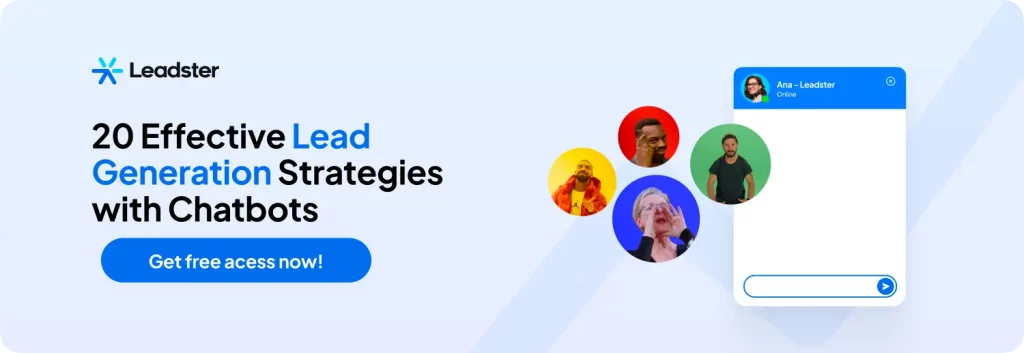
DIY Chatbots
This type of chatbot is created with already robust frameworks as a base, with customization of rules and criteria according to each individual need of the company that will offer this tool to visitors or consumers.
With pre-defined functionalities, it is also faster to develop, as it only needs to add new functionalities or adapt existing ones, rather than building a chatbot from scratch.
An example of this type of chatbot is Google Dialogflow, an AI-focused conversation tool. Some of its features are:
- Create visual flows;
- Implement Omnichannel feature;
- Access state-based data models;
- Manage end-to-end resources.
Thus, with all this, it is clear that the types of chatbots can be applied in various areas and markets. To summarize, here are some of them:
17 examples of chatbots of all types

To better understand the types of chatbots, the best thing we can do is to analyze the various functionalities they present directly.
And this is best done with examples.
Today there are already many quite varied types of chatbots, and some with such subtle variations — but with so many differences for your business — that only by knowing each one can you have a greater vision of the market.
When researching for your chatbot, take this into consideration. I’ll help you now with a comprehensive list of 17 examples of types of chatbots. Come with me:
Leadster
First, our own chatbot — Leadster specializes in lead generation chatbots.
This means that the main function of our chatbot is not to provide customer service but to convert visitors to your site into leads through customized conversion flows.
The purpose of our chatbot, and of any other dedicated to lead generation, is to increase the conversion rate of your entire website and your Landing Pages. This is our value proposition and our main goal.
Just think about the number of people who enter your site and could be impacted by a personalized approach that converts more than pop-ups and conversion forms?
These tools have been around for almost 20 years now! They are cold, have minimal space for copywriting, and lose a lot of leads because of it.
That’s our main goal: to help you bring more conversion guarantees to your entire site. Leadster can be installed on your blog, contact pages, homepage, and anywhere on your site attracting visitors.
Take a test today to discover our main features. If among the types of chatbots we’ve talked about so far, the one for lead generation makes the most sense for you, it’s time to get to know what we do.
Octadesk
It’s what we were just talking about: some chatbots come with subtle differences that completely change their operation.
The case of Octadesk is interesting for this reason. Its operation goes beyond the website customer service chatbot, also automating Messenger on Facebook and WhatsApp, and bringing a dashboard with integrated analytics for all channels.
And the tool goes far beyond that. The chatbot is actually part of the solutions it offers. Octadesk’s real work is to bring together all your service needs and Customer Experience in one place.
Within this understanding, chatbots are a strategic resource, but Octadesk’s work goes well beyond them. Organizing your entire service process is its main function.
Drift
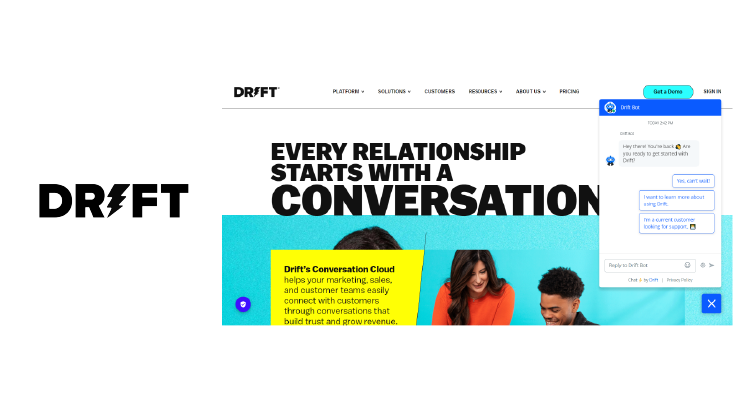
While Octadesk shifts away from chatbots to work with an omnichannel platform, Drift takes a different path: the focus here is on the chatbot itself.
And interestingly, Drift’s business model is very similar to ours here at Leadster. The company also delivers a lead generation chatbot.
Everything we discussed earlier applies to Drift as well. Its role is to deliver personalized messages on any page of your website to your visitors, thereby increasing your overall conversion rate.
The only drawback with Drift is that it lacks Portuguese support and has a significantly high price (in dollars).
But that shouldn’t deter you from having a lead generation chatbot on your site: try Leadster for free today!
Landbot
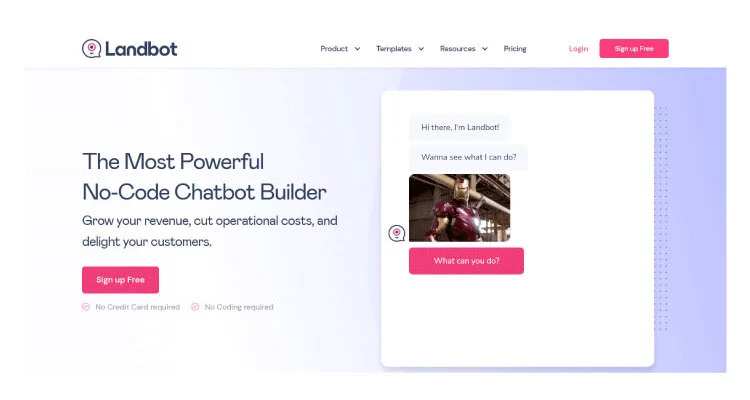
Now we need to talk about one of the more future-focused types of chatbots: those that allow many integrations and are simultaneously low-code or no-code.
These two magical words have been dominating the SaaS market lately. Essentially, they are highly advanced tools that do not require programming knowledge for installation.
Landbot allows you to create chatbots on your website, WhatsApp, and beyond: you can also create and integrate them into your own apps and similar tools.
Imagine a restaurant offering a digital menu via an app. This menu can come with a chatbot integrated into the app via Landbot. And the owner can learn to install it themselves.
Landbot is one of the most advanced types of chatbots: those that care about the customer experience across all possible touchpoints. And it doesn’t neglect lead generation with the chatbot installed on the site.
JivoChat

Another type of chatbot concerned with omnichannel support during customer service.
Today, JivoChat already allows you to create chatbots for automated messaging on the following channels:
- WhatsApp;
- Telegram Chatbot;
- Gmail;
- Instagram;
- Facebook.
But its focus is really on customer service, as is common with these types of chatbots.
An interesting point about JivoChat that places it high in the ranking of the best customer service chatbots in Brazil is the availability of an API for integration into various other sales applications and CRMs like Pipedrive.
It also allows you to serve customers coming from websites created on platforms like Wix and Loja Integrada, which offer less control over the e-commerce built there.
Zendesk
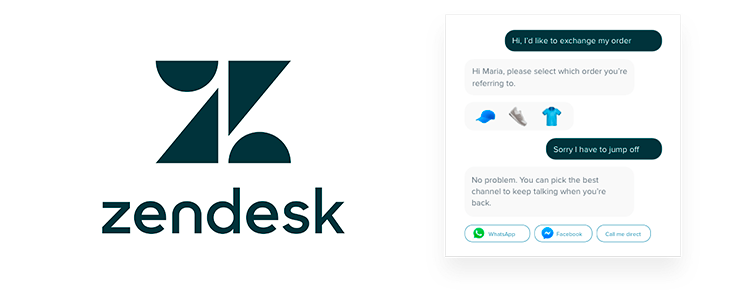
Among all types of chatbots focused on customer experience, Zendesk easily takes the title of the most popular among them.
In addition to being well-known to the public due to its functionalities, the platform is also constantly developing and bringing new features.
Everything we’ve shown so far as non-standard functionalities in types of chatbots, Zendesk offers natively. API for integration, contact automation on social networks, centralization of service on a single platform: it has it all.
Zendesk focuses on larger operations, and its chatbot is just one of its functionalities, not exactly the central point of its value proposition.
Zendesk is also developing an Artificial Intelligence system that, although it cannot yet directly respond to any customer queries, can already be used to facilitate and expedite the work of customer service agents.
Intercom
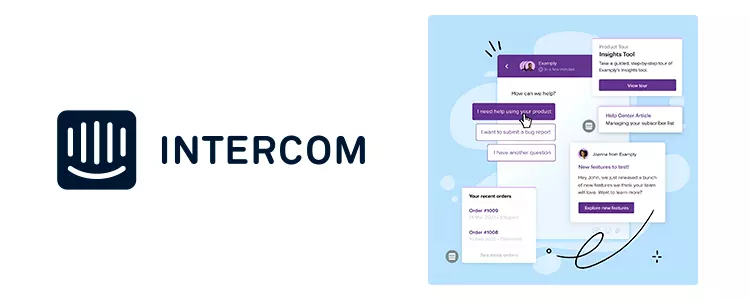
Intercom operates a large messaging platform, with a lead generation chatbot included.
Its operation is quite similar to Leadster’s: replacing forms to increase conversions is its main concern, but it’s not the only one.
The work goes beyond that. Intercom provides an omnichannel service platform, with the ability to deliver any message across all your service channels.
Behind all this is a robust platform that can deliver much more to those in need.
The company has been in the market for many years and is recognized as one of the first providers of chatbots, inspiring many other companies to enter the market.
Botsify
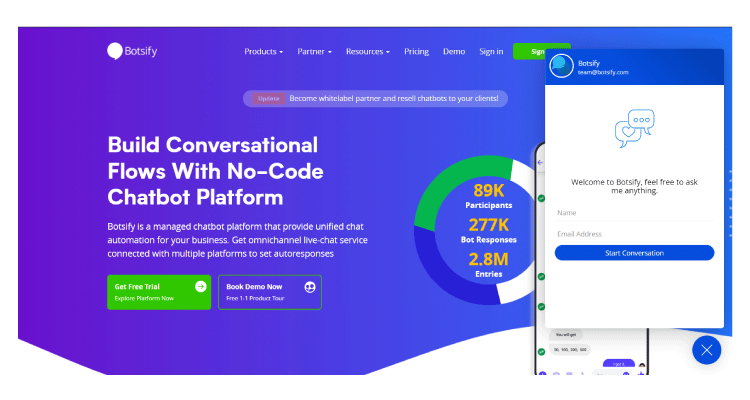
Among types of chatbots, lead generation is one of the most common, as you can see.
Botsify follows this pattern. It’s a tool focused on generating leads by creating chatbots that go on the website, all without code and using a drag-and-drop model.
And following this line, it’s also not localized and suffers from a lack of support in Portuguese.
But at the same time, there’s native tool support for Portuguese, ensuring that at least commands can be displayed without major issues.
But one of its most interesting features is configuring chatbots with support for images and especially carousels. The tool is one of the few in the segment to offer this type of functionality.
Aivo
Aivo is a comprehensive chatbot solution, but not in terms of offering many functionalities; rather, it excels in the technology behind its customer service chatbot.
What they offer are three different features that operate in each chatbot interaction, including ChatGPT:
- AgentBot: recognizes names, situations, and initiates conversations naturally;
- AlvoStudio: capable of understanding the customer’s question and answering it based on pre-configured triggers — for example, asking a bank how much balance you have in your account;
- ChatGPT: can answer customer queries naturally without the need for triggers. For example, a customer asks a pizzeria what black anchovy is.
With these three functionalities working together, Aivo stands out among chatbot types, being the best choice for those handling highly complex interactions.
ManyChat
ManyChat is another chatbot specialized in managing conversations across social media, SMS, and WhatsApp.
It doesn’t differ much from other similar chatbots we’ve discussed in the text. Its integrations are straightforward, and the construction of chatbots isn’t overly complicated. It’s a user-friendly tool that’s easy to understand. Over time, you can assess its cost-benefit and opt for a more robust solution if necessary.
Customers.ai
The biggest advantage of Customers.ai lies in its wide range of functionalities. In tech terms, this is what we call a tech stack — a set of B2B solutions that collectively address various aspects of your company.
Customers.ai’s main focus is on creating flows and pipelines to optimize lead generation and customer acquisition on your site. This involves several tools, including a chatbot.
These advanced resources are primarily geared towards large companies. Customers.ai works from prospecting new clients to delivering significant opportunities to the sales team.
How to Choose the Best Type of Chatbot for Your Business?
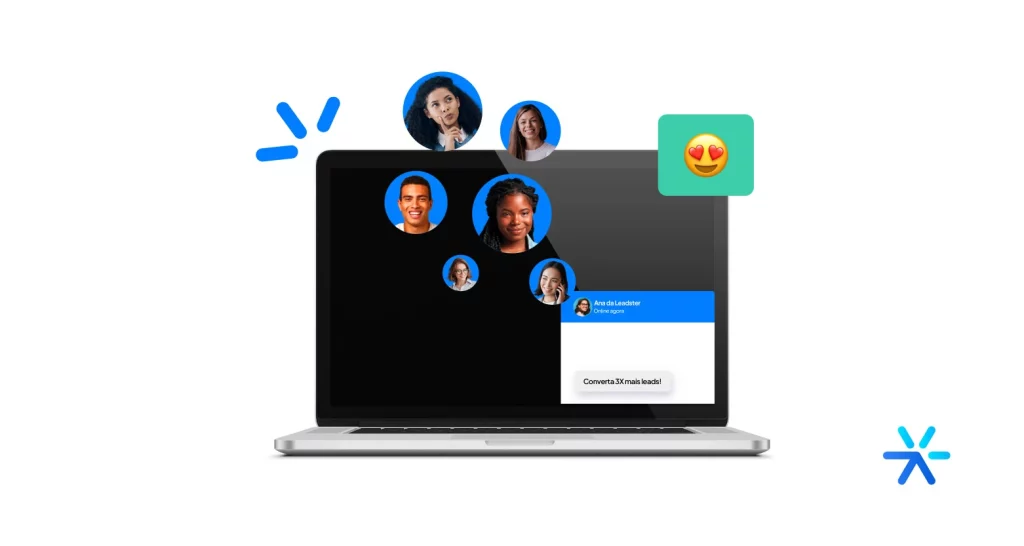
There’s no magic formula for choosing the best type of chatbot; it depends on your company’s goals. Your business might need a tool for customer support, marketing, sales, or even for platforms like WhatsApp and Messenger.
Consider what your business needs. Do you want more qualified leads or to offer a better customer experience? Also, think about which team is more overloaded: sales, marketing, or customer service?
With these insights, you can ask yourself again: “What does my business need — improved customer service or increased lead generation and sales?” Your answer will guide you to the ideal type of chatbot for your company.
What Type of Chatbot Does Leadster Offer?
Here at Leadster, our focus is on increasing our clients’ lead generation by up to three times and providing a tool that not only generates contacts but also qualifies them.
We also offer a sales and marketing-focused chatbot tool with rule-based intelligence, offering options and utilizing DIY Chatbot technology for quick implementation and usage.
With this tool, you can personalize the copywriting of questions and interactions based on consumer habits and actions, thereby providing personalized experiences that engage visitors to your institutional website, landing pages, and blogs, ultimately boosting conversion rates.
To better understand how we operate, you can check out our free trial today! No credit card required.
Thanks for reading 😉


